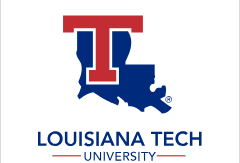Date of Award
Fall 11-18-2023
Document Type
Thesis
Degree Name
Master of Science (MS)
Department
Molecular Science and Nanotechnology
First Advisor
Mark DeCoster
Abstract
Osteoarthritis (OA) is a prevalent degenerative joint disorder characterized by cartilage lesions and subchondral bone destruction (1). Addressing OA is challenging due to cartilage's avascular and aneural nature, unique cellular arrangement, and dense extracellular matrix (ECM). Current pharmacological treatments are mainly symptomatic and are unable to halt disease progression or reverse cartilage damage . Surgical interventions also come with complications. Tissue-engineered grafts using biomaterials and molecular manipulation have emerged as potential treatments for cartilage regeneration. Copper-containing scaffolds have shown promise in bone and cartilage regeneration. Nanotechnology offers new avenues, with nanoparticles and nanofibers being used in tissue engineering research. However, raw nanomaterials can be toxic due to their small size and high surface area. In this study, a newly developed copper-containing nanocomposite known as Copper High Aspect Ratio Structures (CuHARS) is introduced, with a proposed hypothesis regarding its potential effects on chondrocyte proliferation and the synthesis of the extracellular matrix (ECM). Chondrocytes are the primary cells found in articular cartilage (AC), and their main role involves synthesizing the cartilage matrix, which consists of collagen type 2, proteoglycans, and glycosaminoglycans (GAGs). Copper plays a critical role in the formation of the extracellular matrix (ECM), while cystine, a natural amino acid, is also inherent in the ECM. The study aims to evaluate CuHARS effects on chondrocytes in vitro, examining proliferation, cytotoxicity, morphological changes, and ECM synthesis. Additionally, the interaction between CuHARS and 3D cell spheroids is investigated, considering its application in tissue engineering scaffolds for cartilage regeneration. Our findings reveal that CuHARS degrade gradually over time, ensuring chondrocytes are not exposed to a sudden copper influx, minimizing toxicity risk. CuHARS-treated chondrocytes display sustained viability compared to copper nanoparticles (CuNPs). Transformed chondrocytes (3G cells) exhibit distinct morphology and prolonged survival, potentially attributed to mechanisms akin to natural selection and/or transdifferentiation. Transformed chondrocytes (3G cells) maintain pH stability and exhibit altered nuclear morphology. Moreover, CuHARS shows attachment to 3D spheroid structures, gradually breaking down without disintegrating the spheroids. These findings open new avenues for CuHARS application in tissue engineering and regenerative medicine, offering innovative solutions for OA treatment and cartilage regeneration.
Recommended Citation
Khasru, Tasneem, "" (2023). Thesis. 158.
https://digitalcommons.latech.edu/theses/158

